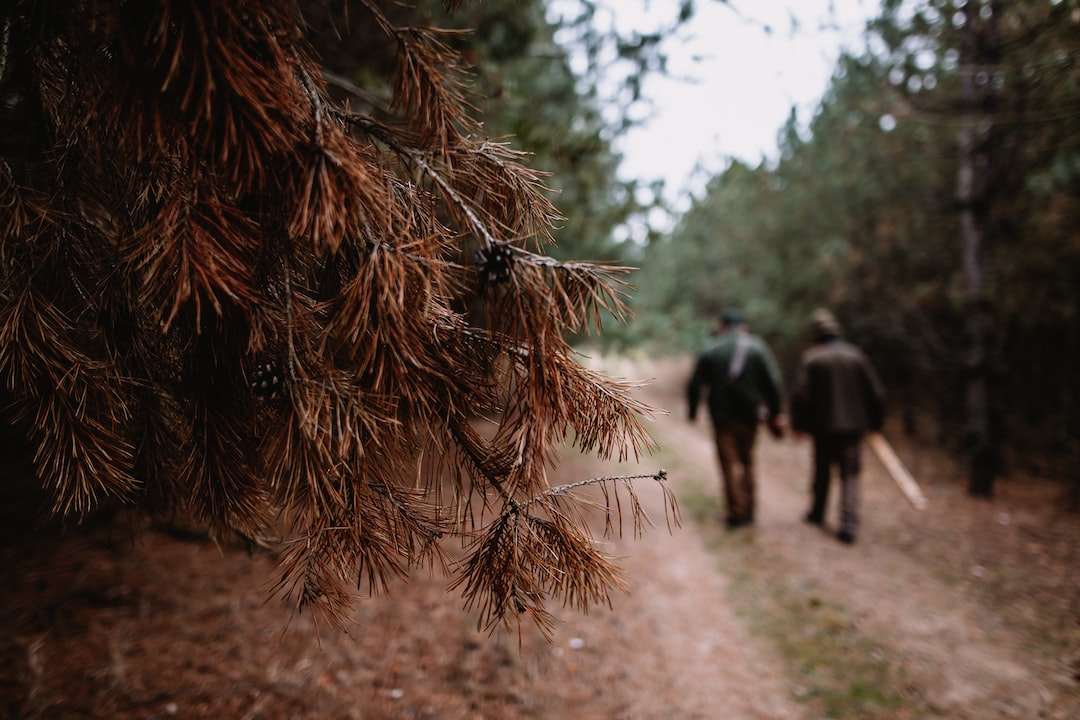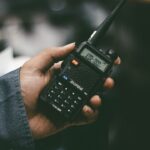What is in a first aid kit? It’s more than just bandages and antiseptics. An effective first-aid kit is essential for medical emergencies, particularly when you’re in the outdoors.
This comprehensive guide will delve into the essential components of an aid kit, including items for wound cleaning and serious situations like resuscitation efforts. We’ll also discuss how to personalize your kits with necessary medications and survival tools such as waterproof matches.
You’ll learn about protective measures against extreme weather conditions, key pharmaceutical products to keep at hand, and tips on maintaining the effectiveness of your first-aid kits over time. So let’s dive deeper into what is in a first aid kit that makes it indispensable for outdoor enthusiasts.
Essential Components of a First Aid Kit
When venturing outdoors, having a fully-equipped first aid kit is essential for safety. But what exactly should you include in your kit? Let’s break down some essential components.
Adhesive Tape & Assorted Bandages
The backbone of any first aid kit, adhesive tape and assorted bandages are used for covering wounds and preventing infection. These can range from small cuts to larger injuries that require more substantial coverage.
Eye Shield
An eye shield is another must-have item. This protective gear can prevent further injury or contamination if an eye-related incident occurs.
Cotton Balls & Swabs
Cotton balls and swabs serve multiple purposes such as cleaning wounds or applying medication. They’re lightweight, easy to pack, and indispensable when dealing with minor injuries.
Wound Cleaning Essentials
To properly clean a wound before dressing it, you’ll need oil or lubricant along with scissors and tweezers. Medical-grade scissors can cut through clothing if necessary, while tweezers are useful for removing debris from wounds.
For optimal hygiene, use hand sanitizer to keep hands clean and apply antibiotic ointment to prevent bacterial infections. Antiseptic solution or wipes are also useful for disinfecting wounds before dressing them up. The Red Cross provides comprehensive guidelines on assembling an effective first aid kit.
Having the necessary supplies is essential, but being able to use them properly is equally important.
Dealing With Serious Situations Using Your First Aid Kit
When it comes to your first aid kit, it’s not just about treating minor injuries. You need to be prepared for more serious situations too. Here are some items that can make a big difference:
Breathing Barrier for Resuscitation Efforts
A breathing barrier is a must-have when performing CPR. It protects you from direct contact with the victim’s mouth and nose while providing life-saving breaths.
Hydrogen Peroxide Uses
Hydrogen peroxide is a versatile item in your first aid kit. It’s great for wound cleaning, but use it sparingly as it can damage healthy tissue around wounds if used excessively.
Aspirin Usage Guidelines
- If an adult experiences chest pain (which could be a sign of a heart attack), chewing one 325 mg tablet of regular strength aspirin at the onset of symptoms could potentially save their life by reducing blood clotting.
- Note: Aspirin should not be given to children under 19 due to the risk of Reye’s syndrome – a rare but severe illness that affects all organs and causes serious liver damage.
Remember, having the right tools in your first aid kit can greatly increase survival chances during emergencies. Stay prepared and stay safe.
Additional Items for Personalized Needs in Your First Aid Kit
First aid kits are like snowflakes – no two are the same. It’s important to customize your kit based on your unique health needs and lifestyle. Healthcare providers agree that personalizing your kit is the way to go.
Personal Medications Inclusion Tips
If you suffer from a persistent illness, for example diabetes or heart disease, make sure to take along your essential medications and directions on their usage. Don’t forget to bring an extra pair of prescription glasses if you need them. And if you have allergies, pack antihistamines to save yourself from unexpected reactions.
The Importance of Keeping Track Of Symptoms
A small notepad and pen can be a lifesaver when tracking symptoms over time following sudden illnesses or injuries. This information could provide crucial insights for healthcare professionals treating the patient later on.
Aside from these personalized additions, there are other essentials that everyone should consider including in their kit:
- Sunscreen: Protect yourself from harmful UV rays whether you’re hiking up mountains or fishing by the lake.
- Insect repellent: A must-have item, especially if you’re venturing into areas known for mosquitoes and ticks which carry diseases such as Lyme disease and West Nile virus respectively.
Your first aid kit is more than just a box filled with medical supplies; it’s an essential tool designed specifically for your safety while exploring nature’s beauty.
Survival Tools To Include In Your First Aid Kit
When you’re out in the wilderness, it’s not just about treating injuries and illnesses. It’s also about survival. That’s why your first aid kit should include a few essential tools that could prove to be lifesavers in an emergency situation.
Emergency Contact Information Necessity
The first of these is a list of emergency phone numbers. This should include local authorities, as well as any relevant medical contacts. It’s important to be prepared for any eventuality, so having emergency contact information and medical consent forms on hand is a must.
It is prudent to bring along medical consent forms for all members of the group, particularly if they have any special health issues or allergies that would be essential for responders to know about.
Waterproof Matches And Their Usefulness
The second tool is waterproof matches. When stranded in remote locations where starting fires quickly without wasting resources becomes necessary, having waterproof matches can make all the difference between comfort and distress—or even life and death.
Last but certainly not least are cell phones equipped with solar chargers. These provide communication options even in isolated environments where there may be no other means of contacting the outside world.
To sum up: A comprehensive first aid kit isn’t just about bandages and antiseptics—it’s also about being prepared for whatever Mother Nature throws at you.
Protective Measures Against Extreme Weather Conditions
As an outdoor enthusiast, you know that Mother Nature can be unpredictable. That’s why it’s crucial to have protective measures in place for harsh weather conditions. One such measure is the inclusion of space blankets in your first aid kit.
Space Blankets And Their Role In Hypothermia Prevention
Hypothermia, a dangerous fall in core body temperature to below 95°F (35°C), can happen when exposed to cold conditions without sufficient protection. Space blankets, also known as emergency thermal blankets or Mylar blankets, reflect up to 90% of radiated body heat back towards the user, making them essential during instances of hypothermia exposure.
These blankets are compact, lightweight, and easy to add to any first aid kit. They could potentially save lives by preventing further complications from extreme cold weather exposure.
- Durable: Despite their thin appearance, space blankets are incredibly durable and resistant to tears and punctures.
- Versatile: Beyond providing warmth, they can also serve as ground coverings or makeshift shelters if needed.
- Lifesaving: By maintaining body temperature and reducing heat loss in low-temperature environments, they play a critical role in survival situations where hypothermia is a risk.
Incorporating this versatile tool into your first aid kit would certainly enhance its effectiveness against extreme weather conditions encountered outdoors. Therefore, it is essential to not only possess the necessary items for survival but also be well-versed in their use.
For more information on hypothermia prevention and treatment, check out the Mayo Clinic’s website.
Maintaining an Effective First-Aid Kit Over Time
Regular checks and updates can make all the difference in an emergency.
Tips for Ensuring Continued Effectiveness of Your First-Aid Kit
- Regular Checks: Inspect your first-aid kit periodically to ensure it’s well-stocked and ready for use. Check expiration dates on medications, make sure bandages are sterile, and confirm tools like scissors or tweezers are clean and functional.
- Battery Check: Many kits include flashlights that can be lifesavers in low-light situations. Always check to ensure flashlight batteries work properly. Replace them as needed so you’re never caught off guard.
- Educate Yourself: Knowledge is power, especially in medical emergencies. Consider taking courses through the American Red Cross to familiarize yourself with various techniques involved in administering Basic Life Support (BLS) and Cardiopulmonary Resuscitation (CPR). These skills could enhance survival chances for victims of cardiac arrest or other serious incidents.
- Replace Expired Supplies: Many supplies within a first-aid kit have expiry dates too. Make it a habit to replace expired supplies promptly to maintain the effectiveness of your kit.
In essence, maintaining an effective first-aid kit isn’t just about having one – it’s about keeping it updated and knowing how to use its contents effectively. So stay prepared by regularly updating your knowledge and restocking essential items.
Broader Spectrum Pharmaceuticals Necessary For Outdoor Life
Life in the great outdoors can be unpredictable. One moment you’re enjoying a serene hike, and the next, you could be dealing with an unexpected ailment or discomfort. It’s essential to keep a variety of medicines handy for unexpected situations.
Key Pharmaceutical Products To Have At Hand
- Hydrocortisone cream: This is useful for treating skin irritations like insect bites or rashes.
- Nasal decongestants and decongestant tablets: These are handy when dealing with cold symptoms while out in the wilderness.
- Lip balm: It helps prevent chapped lips caused by harsh weather conditions.
- Aloe vera gel and calamine lotion: Both provide relief from sunburns and other minor burns.
- Petroleum jelly: This versatile product can help protect your skin from windburn, serve as lip balm, or even assist in starting fires if needed.
- Instant activating cold packs: An absolute must-have for reducing swelling due to injuries. They don’t require refrigeration, which makes them perfect for outdoor trips.
In addition to these items, consider including anti-nausea medicine, diarrhea laxatives, antacids, as well as latex-free gloves for administering first aid safely. Remember that each individual might need different medications based on their health history, so always personalize your kit accordingly.
Maintaining a comprehensive first aid kit catering not only to physical injuries but also common ailments enhances safety during your outdoor adventures, whether hunting deer in Montana or hiking trails in Colorado. Always stay prepared.
FAQs in Relation to What is in a First aid Kit
What’s in a First Aid Kit?
A First Aid Kit includes items like bandages, adhesive tape, gauze pads, antiseptic wipes, tweezers, and medical gloves.
.
10 Essential Items in a First Aid Kit
Bandages, adhesive tape, antiseptic wipes, tweezers, medical gloves, pain relievers, hydrocortisone cream, gauze pads, emergency blanket, and breathing barrier.
.
What is a First Aid Kit and Why is it Important?
A First Aid Kit is a collection of supplies used to provide immediate care during health emergencies, and its primary purpose is to manage minor injuries or stabilize serious conditions until professional help arrives.
.
What are the 20 Items in a First Aid Box?
- Gloves
- Sterile Dressings
- Cleansing Wipes
- Digital Thermometer
- Painkillers (Aspirin)
- Burn Gel Packets
- Eyewash Solution
.
Conclusion
As an outdoors enthusiast, hunter, or sportsman, it’s crucial to have a well-stocked first-aid kit on hand, including adhesive tape, assorted bandages, wound cleaning essentials like hydrogen peroxide and cotton balls/swabs, breathing barriers for resuscitation efforts, aspirin usage guidelines, space blankets for hypothermia prevention, and waterproof matches.
Don’t forget to check expiration dates regularly and include personal medications and symptom tracking tips to ensure continued effectiveness of your first-aid kit over time.
Key pharmaceutical products such as antihistamines and pain relievers are also important to have at hand when venturing into the great outdoors.



